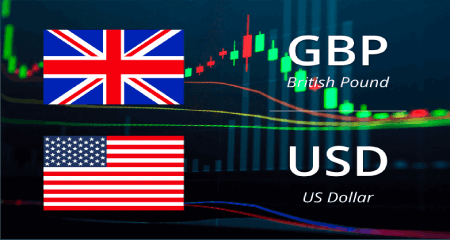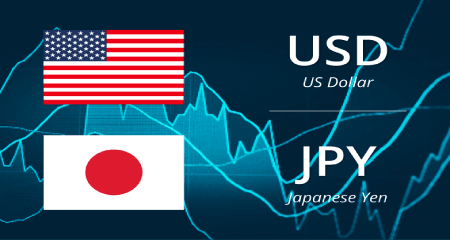GBP/USD gained some follow-through traction
- crowdsignals
- Trading Signals News
- Hits: 3150
 The GBP/USD pair maintained its bid tone through the first half of the European session, albeit has trimmed a part of its intraday gains and was last seen trading around the 1.3730-25 region. The pair built on the previous day's strong rally of over 130 pips from sub-1.3600 levels and gained some follow-through traction for the second consecutive session on Thursday. The momentum was supported by a subdued US dollar price action and pushed the GBP/USD pair to the 1.3755-60 region in the last hour, though a combination of factors capped the upside. The resurgence of the COVID-19 infections in the UK, along with the impasse over the Northern Ireland Protocol of the Brexit deal continued acting as a headwind for the British pound. In fact, new cases have been rising by more than 50,000 a day in the UK. On the Brexit front, the EU rejected the UK’s demand for a new approach to the Northern Ireland Protocol.
Apart from this, the Bank of England Deputy Governor Ben Broadbent's comments on inflation further collaborated towards keeping a lid on any strong gains for the GBP/USD pair. During a scheduled speech this Thursday, Broadbent was not convinced that current inflation should mean higher inflation in 18-24 months ahead – a more relevant time horizon for monetary policy. The market was quick to react and pushed back expectations for a 15 bps hike by the BoE to August 2022 from May 2022. This was seen as a key factor behind a modest intraday pullback witnessed over the past hour or so. That said, the lack of any strong follow-through selling warrants some caution for bearish traders and positioning for the resumption of the recent downtrend. Market participants now look forward to the highly-anticipated European Central Bank meeting, which might infuse some cross-driven volatility. Apart from this, the US economic docket – featuring the second-tier releases of Initial Weekly Jobless Claims and Existing Home Sales data – might influence the USD and produce some trading opportunities around the GBP/USD pair.
The GBP/USD pair maintained its bid tone through the first half of the European session, albeit has trimmed a part of its intraday gains and was last seen trading around the 1.3730-25 region. The pair built on the previous day's strong rally of over 130 pips from sub-1.3600 levels and gained some follow-through traction for the second consecutive session on Thursday. The momentum was supported by a subdued US dollar price action and pushed the GBP/USD pair to the 1.3755-60 region in the last hour, though a combination of factors capped the upside. The resurgence of the COVID-19 infections in the UK, along with the impasse over the Northern Ireland Protocol of the Brexit deal continued acting as a headwind for the British pound. In fact, new cases have been rising by more than 50,000 a day in the UK. On the Brexit front, the EU rejected the UK’s demand for a new approach to the Northern Ireland Protocol.
Apart from this, the Bank of England Deputy Governor Ben Broadbent's comments on inflation further collaborated towards keeping a lid on any strong gains for the GBP/USD pair. During a scheduled speech this Thursday, Broadbent was not convinced that current inflation should mean higher inflation in 18-24 months ahead – a more relevant time horizon for monetary policy. The market was quick to react and pushed back expectations for a 15 bps hike by the BoE to August 2022 from May 2022. This was seen as a key factor behind a modest intraday pullback witnessed over the past hour or so. That said, the lack of any strong follow-through selling warrants some caution for bearish traders and positioning for the resumption of the recent downtrend. Market participants now look forward to the highly-anticipated European Central Bank meeting, which might infuse some cross-driven volatility. Apart from this, the US economic docket – featuring the second-tier releases of Initial Weekly Jobless Claims and Existing Home Sales data – might influence the USD and produce some trading opportunities around the GBP/USD pair.
USD/JPY struggled to capitalize on its modest intraday gains
- crowdsignals
- Trading Signals News
- Hits: 3226
 The USD/JPY pair retreated around 25-30 pips from the daily swing highs and was last seen hovering around mid-109.00s during the early North American session. The pair gained some positive traction during the early part of the trading action on Tuesday and was supported by a combination of factors, though struggled to capitalize on the move. A solid rebound in the equity markets undermined demand for the safe-haven Japanese yen. This, along with sustained US dollar buying, extended some support to the USD/JPY pair. That said, the recent sharp decline in the US Treasury bond yields, along with diminishing odds for an imminent Fed action in the near future, held the USD bulls from placing aggressive bets. In fact, the yield on the benchmark 10-year US government bond fell below the 1.16% threshold for the first time in over five months and capped the upside for the USD/JPY pair.
Meanwhile, the Fed funds futures showed the chances of a quarter-point hike in December 2022 fell to 58% on Monday from 90% on July 13, while the likelihood that the Fed raises rates in January 2023 dropped to 70% from 100% last Tuesday. Adding to this, the spread between 10-year and 2-year yields remained near February lows, signalling doubts about the growth outlook. This comes on the back of growing market fears about the potential economic fallout from the fast-spreading Delta variant of the coronavirus, which should act as a tailwind for the JPY. The fundamental backdrop seems tilted in favour of bearish traders and supports prospects for an extension of this month's retracement slide from YTD tops, around the 111.65 region touched last week.
The USD/JPY pair retreated around 25-30 pips from the daily swing highs and was last seen hovering around mid-109.00s during the early North American session. The pair gained some positive traction during the early part of the trading action on Tuesday and was supported by a combination of factors, though struggled to capitalize on the move. A solid rebound in the equity markets undermined demand for the safe-haven Japanese yen. This, along with sustained US dollar buying, extended some support to the USD/JPY pair. That said, the recent sharp decline in the US Treasury bond yields, along with diminishing odds for an imminent Fed action in the near future, held the USD bulls from placing aggressive bets. In fact, the yield on the benchmark 10-year US government bond fell below the 1.16% threshold for the first time in over five months and capped the upside for the USD/JPY pair.
Meanwhile, the Fed funds futures showed the chances of a quarter-point hike in December 2022 fell to 58% on Monday from 90% on July 13, while the likelihood that the Fed raises rates in January 2023 dropped to 70% from 100% last Tuesday. Adding to this, the spread between 10-year and 2-year yields remained near February lows, signalling doubts about the growth outlook. This comes on the back of growing market fears about the potential economic fallout from the fast-spreading Delta variant of the coronavirus, which should act as a tailwind for the JPY. The fundamental backdrop seems tilted in favour of bearish traders and supports prospects for an extension of this month's retracement slide from YTD tops, around the 111.65 region touched last week.
A modest USD profit-taking assisted GBP/USD to reverse
- crowdsignals
- Trading Signals News
- Hits: 3185
 The GBP/USD pair once again showed some resilience below the 1.3600 mark and quickly recovered around 40-50 pips from the daily swing lows. The pair climbed back closer to the top end of its daily trading range, though lacked any follow-through buying and was last seen hovering around the 1.3630 region. A generally positive risk tone – as depicted by a strong follow-through rally in the equity markets – prompted some profit-taking around the safe-haven US dollar. This, in turn, was seen as a key factor that extended some support to the GBP/USD pair. That said, the impasse over the Northern Ireland Protocol of the Brexit deal, along with the resurgence of the COVID-19 infections in the UK acted as a headwind for the British pound and capped gains.
From a technical perspective, the GBP/USD pair has found acceptance below the very important 200-day SMA for the first time since July 2020 and seems vulnerable to slide further. The pair, however, managed to find some support just ahead of February 2021 on Tuesday. This, coupled with the fact that RSI (14) on the daily chart has moved on the verge of breaking into the oversold territory, warrants some caution for aggressive bearish traders. Hence, it will be prudent to wait for some consolidation or a modest bounce before positioning for any further depreciating move. In the meantime, any attempted recovery move might be seen as a selling opportunity and runs the risk of fizzling out rather quickly near the 1.3700 mark. This coincides with the 200-DMA support breakpoint and should now act as a key pivotal point and help determine the next leg of a directional move for the GBP/USD pair. On the flip side, the 1.3570-60 region seems to have emerged as immediate support. A convincing break below will be seen as a fresh trigger for bearish traders and prompt some technical selling. The GBP/USD pair might then accelerate the fall further towards the key 1.3500 psychological mark. The downward trajectory could further get extended towards the next relevant support near the 1.3450-30 horizontal zone.
The GBP/USD pair once again showed some resilience below the 1.3600 mark and quickly recovered around 40-50 pips from the daily swing lows. The pair climbed back closer to the top end of its daily trading range, though lacked any follow-through buying and was last seen hovering around the 1.3630 region. A generally positive risk tone – as depicted by a strong follow-through rally in the equity markets – prompted some profit-taking around the safe-haven US dollar. This, in turn, was seen as a key factor that extended some support to the GBP/USD pair. That said, the impasse over the Northern Ireland Protocol of the Brexit deal, along with the resurgence of the COVID-19 infections in the UK acted as a headwind for the British pound and capped gains.
From a technical perspective, the GBP/USD pair has found acceptance below the very important 200-day SMA for the first time since July 2020 and seems vulnerable to slide further. The pair, however, managed to find some support just ahead of February 2021 on Tuesday. This, coupled with the fact that RSI (14) on the daily chart has moved on the verge of breaking into the oversold territory, warrants some caution for aggressive bearish traders. Hence, it will be prudent to wait for some consolidation or a modest bounce before positioning for any further depreciating move. In the meantime, any attempted recovery move might be seen as a selling opportunity and runs the risk of fizzling out rather quickly near the 1.3700 mark. This coincides with the 200-DMA support breakpoint and should now act as a key pivotal point and help determine the next leg of a directional move for the GBP/USD pair. On the flip side, the 1.3570-60 region seems to have emerged as immediate support. A convincing break below will be seen as a fresh trigger for bearish traders and prompt some technical selling. The GBP/USD pair might then accelerate the fall further towards the key 1.3500 psychological mark. The downward trajectory could further get extended towards the next relevant support near the 1.3450-30 horizontal zone.
Silver was seen consolidating the previous day’s sharp fall
- crowdsignals
- Trading Signals News
- Hits: 4506
 Silver remained confined in a range above the $25.00 mark through the first half of the European session and consolidated the overnight slump to the lowest level since April 13. The previous day's sharp fall dragged the XAG/USD below the $25.70-65 confluence support – comprising of the very important 200-day SMA and the 61.8% Fibonacci level of the $23.78-$28.75 move up. A subsequent breakthrough the previous monthly swing lows, around mid-$25.00s was seen as a fresh trigger for bearish traders and has set the stage for additional weakness. The negative outlook is reinforced by bearish technical indicators on the daily chart, which was still far from being in the oversold territory. Sustained weakness below the key $25.00 psychological mark will reaffirm the bearish bias and prompt some aggressive technical selling. The XAG/USD might then accelerate the fall further towards the $24.70-65 intermediate support.
The downward trajectory could further get extended towards the $24.00 round-figure mark before the XAG/USD eventually drops to challenge YTD lows, around the $23.80-75 region touched in March. On the flip side, any attempted recovery move might now be seen as a selling opportunity near the mentioned $25.70-65 confluence support breakpoint and runs the risk of fizzling out rather quickly. This is followed by the $26.00 round-figure mark, above which the recovery could further get extended towards the next relevant barrier near the $26.40-50 heavy supply zone.
Silver remained confined in a range above the $25.00 mark through the first half of the European session and consolidated the overnight slump to the lowest level since April 13. The previous day's sharp fall dragged the XAG/USD below the $25.70-65 confluence support – comprising of the very important 200-day SMA and the 61.8% Fibonacci level of the $23.78-$28.75 move up. A subsequent breakthrough the previous monthly swing lows, around mid-$25.00s was seen as a fresh trigger for bearish traders and has set the stage for additional weakness. The negative outlook is reinforced by bearish technical indicators on the daily chart, which was still far from being in the oversold territory. Sustained weakness below the key $25.00 psychological mark will reaffirm the bearish bias and prompt some aggressive technical selling. The XAG/USD might then accelerate the fall further towards the $24.70-65 intermediate support.
The downward trajectory could further get extended towards the $24.00 round-figure mark before the XAG/USD eventually drops to challenge YTD lows, around the $23.80-75 region touched in March. On the flip side, any attempted recovery move might now be seen as a selling opportunity near the mentioned $25.70-65 confluence support breakpoint and runs the risk of fizzling out rather quickly. This is followed by the $26.00 round-figure mark, above which the recovery could further get extended towards the next relevant barrier near the $26.40-50 heavy supply zone.

